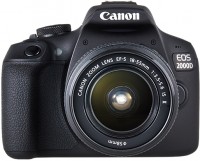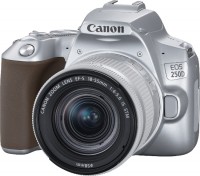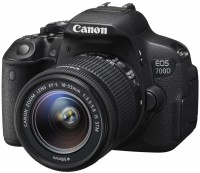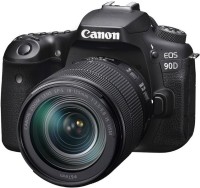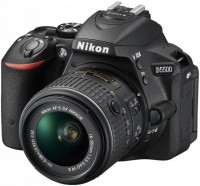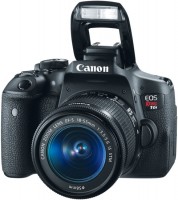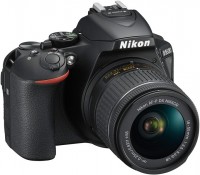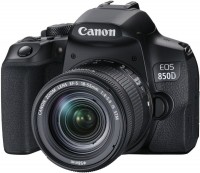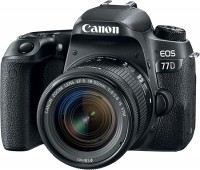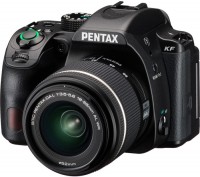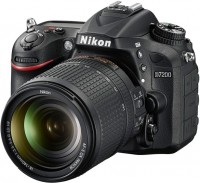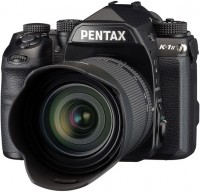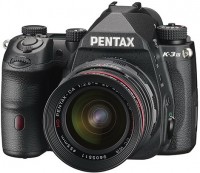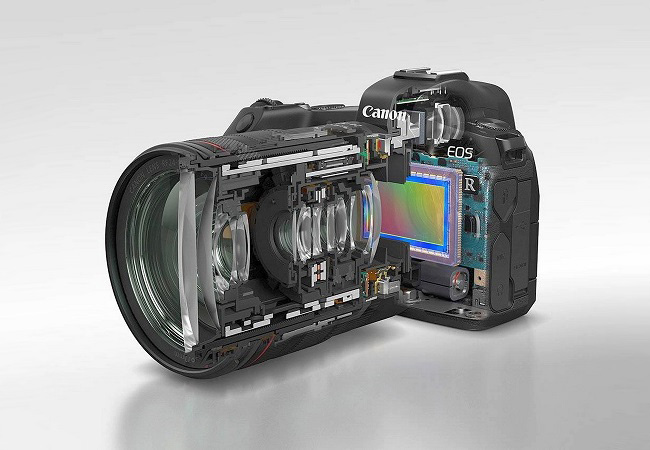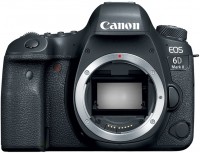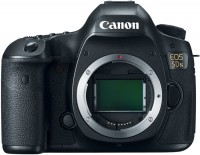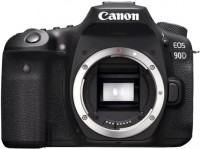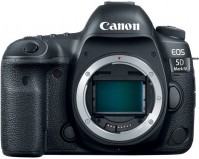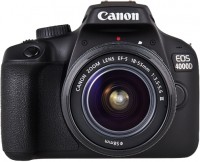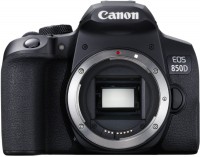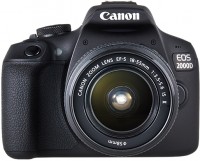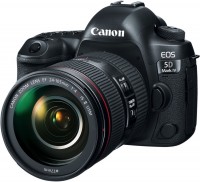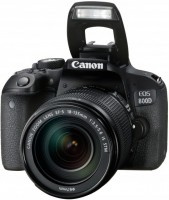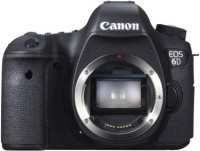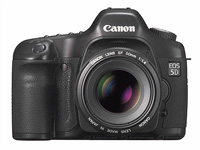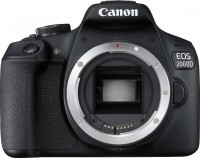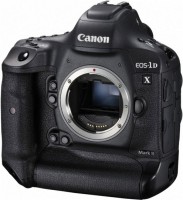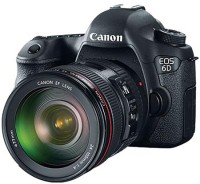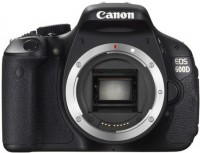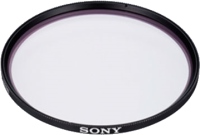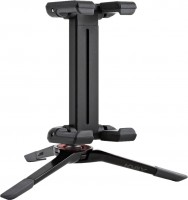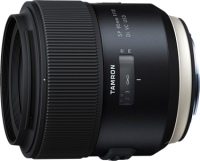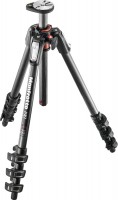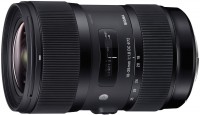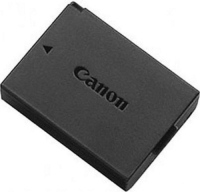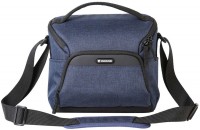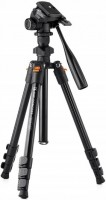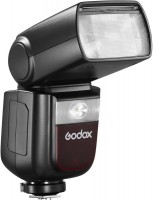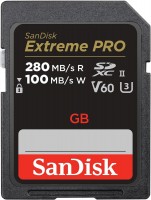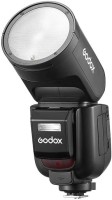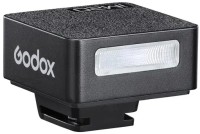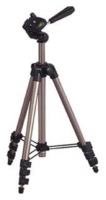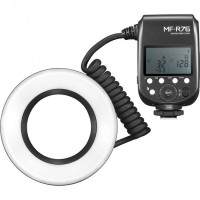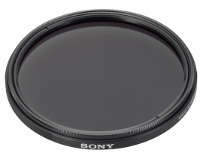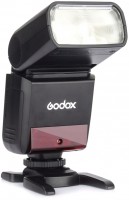Canon EOS 1100D Kit 18-55
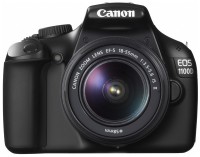 | Outdated Product $475.00 an entry-level SLR, both in terms of price range and feature set. So, the software part includes a help system, including an “evaluator” of photos with highlighting areas with problematic exposure, as well as an easy setup mode for basic settings, designed for beginners in the world of SLR cameras. On the other hand, the sensor resolution is only 12.2 megapixels, the display resolution is 230K pixels; Eye-Fi is supported, but the device cannot work with remote flashes, although it has a built-in one. Complete with lens. |
Canon EOS 1100D Kit 18-55
Panel:APS-C (23x15.5 mm), 12.2 MPix
Focal length:18 - 55 mm
Lens aperture:f/3.5 - f/5.6
Snapshot size:4272x2848 px
ISO range:100-6400
Screen:2.7 ''
an entry-level SLR, both in terms of price range and feature set. So, the software part includes a help system, including an “evaluator” of photos with highlighting areas with problematic exposure, as well as an easy setup mode for basic settings, designed for beginners in the world of SLR cameras. On the other hand, the sensor resolution is only 12.2 megapixels, the display resolution is 230K pixels; Eye-Fi is supported, but the device cannot work with remote flashes, although it has a built-in one. Complete with lens.
All specifications
Specifications EOS 1100D Kit 18-55
|
| ||||||||||||||||||||||||||||||||||||||||||||||||||||||||||||||||||||||||||||||||||||||||||||||||||||||||||||||||||||||||||||||||||||||||||||||||||||||||||||||||||||||||||||||
The information in the model description is for reference purposes.
Always clarify the specifications and configuration of the product with the online store manager before purchasing.
Catalog Canon 2025 - new arrivals, bestsellers, and the most relevant models Canon.
Always clarify the specifications and configuration of the product with the online store manager before purchasing.
Catalog Canon 2025 - new arrivals, bestsellers, and the most relevant models Canon.
Video reviews
Canon EOS 1100D features: Shooting modes:
Live View or Live View Mode:
In the "Live view" mode, sighting is performed not with the help of the viewfinder, but on the monitor. Canon EOS 60D offers five options for displaying information, successively switched by the INFO button. In all cases, we see a “live” image on the screen, and the difference lies in the abundance of information displayed on top of it. At minimum, only the AF frame is superimposed. When you half-press the shutter button (or the [*] button), a bar with exposure parameters (shutter speed, aperture, exposure compensation scale, ISO) is displayed at the bottom, as well as the number of exposures remaining. In the second version of the display, such a strip remains on the screen permanently and is superimposed on top of the image, since a frame in 3:2 format occupies the entire monitor field. There are three more options, in which information about parameters and settings is displayed on the left side of the screen. A histogram (either luminance or RGB) can be added to it, and in the latter version a level indicator is added.
In Live view mode, there are three autofocus options:
Mode "Basic +" (Basic +) and "Creative automatic" (Creative Auto):
These modes are intended for beginners, they do not contain complex technical terms, the settings and the results of their application are described in simple language. Adjustable shutter speed, white balance, and image processing options in Main+ mode let you enhance the expression of your photo with easy-to-understand presets to match your creative intent or lighting type. In Creative Auto mode, background blur can be achieved.
Quick Setup Screen Q:
Pressing the "Q" button switches the display to the "quick setting" mode. Navigator buttons are used to navigate and select a parameter. Pressing the highlighted buttons allows you to proceed to the setup, but the quick setup screen is turned off.
Quick setup includes options such as:
There are four basic display modes available in playback mode - a blank full-screen image, a full-screen image with brief information overlaid, a thumbnail image with detailed information about shooting parameters, and a thumbnail image with increased attention to the histogram (not only the luminance histogram is displayed, but also per channel RGB).
In addition, additional attributes can be included in the menu, such as highlighting overexposed areas (too bright, overexposed areas will flicker, suggesting that it is better to reshoot the frame with exposure compensation), AF point indication (a point, or several points, in which autofocus has worked, displayed as small red rectangles), as well as the Histogram (luminance or RGB histogram).
Control:
Main changes in Canon EOS 1100D control:
The built-in flash is about an inch and a half taller than the lens and will be very useful at close range.
Advantages and disadvantages:
Pros:
Initially, four configurations are presented:
Live View or Live View Mode:
In the "Live view" mode, sighting is performed not with the help of the viewfinder, but on the monitor. Canon EOS 60D offers five options for displaying information, successively switched by the INFO button. In all cases, we see a “live” image on the screen, and the difference lies in the abundance of information displayed on top of it. At minimum, only the AF frame is superimposed. When you half-press the shutter button (or the [*] button), a bar with exposure parameters (shutter speed, aperture, exposure compensation scale, ISO) is displayed at the bottom, as well as the number of exposures remaining. In the second version of the display, such a strip remains on the screen permanently and is superimposed on top of the image, since a frame in 3:2 format occupies the entire monitor field. There are three more options, in which information about parameters and settings is displayed on the left side of the screen. A histogram (either luminance or RGB) can be added to it, and in the latter version a level indicator is added.
In Live view mode, there are three autofocus options:
- The first two are of a contrasting type; using the signal from the matrix.
- The third type is conventional, phase sensors (AF "mirror" type).
Mode "Basic +" (Basic +) and "Creative automatic" (Creative Auto):
These modes are intended for beginners, they do not contain complex technical terms, the settings and the results of their application are described in simple language. Adjustable shutter speed, white balance, and image processing options in Main+ mode let you enhance the expression of your photo with easy-to-understand presets to match your creative intent or lighting type. In Creative Auto mode, background blur can be achieved.
Quick Setup Screen Q:
Pressing the "Q" button switches the display to the "quick setting" mode. Navigator buttons are used to navigate and select a parameter. Pressing the highlighted buttons allows you to proceed to the setup, but the quick setup screen is turned off.
Quick setup includes options such as:
- Exposure compensation scale
- Shooting mode (you can turn on the self-timer (with a delay of 10 or 2 seconds), use the remote control, and also turn on continuous shooting)
- Electronic level
- Flash Exposure Compensation
- Picture style
- Auto brightness correction (three levels of intensity)
- Autofocus mode (single-frame, tracking and combined, in which the camera automatically switches to tracking mode if the movement of an object is detected)
- Metering type
- white balance
- Image quality
There are four basic display modes available in playback mode - a blank full-screen image, a full-screen image with brief information overlaid, a thumbnail image with detailed information about shooting parameters, and a thumbnail image with increased attention to the histogram (not only the luminance histogram is displayed, but also per channel RGB).
In addition, additional attributes can be included in the menu, such as highlighting overexposed areas (too bright, overexposed areas will flicker, suggesting that it is better to reshoot the frame with exposure compensation), AF point indication (a point, or several points, in which autofocus has worked, displayed as small red rectangles), as well as the Histogram (luminance or RGB histogram).
Control:
Main changes in Canon EOS 1100D control:
- Increased the size of the protrusion for the right hand
- DCT keys are made of plastic
- Changed the location of the main buttons
- Added buttons for video recording and quick access to settings
- Missing Picture Style buttons and metering mode selection
- The sensitivity selection button has been moved from the top panel to the back
- The flash release button is located on the top panel
- Depth of field test button missing
The built-in flash is about an inch and a half taller than the lens and will be very useful at close range.
Advantages and disadvantages:
Pros:
- High image quality
- Live View
- Basic+ and Creative Auto mode
- Supports Eye-Fi Connected features - wirelessly transfer images to a home computer or upload photos and videos directly to the Internet, such as Flickr
- No "hot swap" memory card
- Relatively complex menu system
- Non swivel screen
- No compatible battery grip
- Lack of ability to control remote flashes
Initially, four configurations are presented:
- without lens
- with Canon EF-S 18-55mm f/3.5-5.6 IS II lens
- with Canon EF-S 18-55mm f/3.5-5.6 IS II and EF-S 55-250mm F4-5.6 IS lenses
- with Canon EF-S 18-55mm f/3.5-5.6 IS II and EF 50mm F1.8 II lenses
- Canon LP-E10 Lithium Ion Battery
- Charger LC-E10
- Neck strap EW-100DBIII
- IFC-200U/500U USB cable and AVC-DC400ST stereo video cable
- Documentation and software



